AWS Cloud Practitioner CLF-C02
Billing and Pricing
Specific Billing EC2
Welcome back, AWS cloud practitioners. In this article, we explore the billing considerations for the Elastic Compute Cloud (EC2) service—a key component of AWS's virtual machine offerings. We will break down the pricing dimensions, instance sizing tools, various billing models, and additional cost considerations, ensuring you understand how to optimize your EC2 usage.
Pricing Dimensions
EC2 pricing centers on several critical factors:
Instance Size:
The instance family you choose has a significant impact. For instance, the T3 family (general purpose) offers sizes ranging from nano, micro, small, medium, to large. The selected instance size is often the largest contributor to cost.Operating System Licensing:
- Operating systems like Amazon Linux or Ubuntu are billed per second.
- Licensed OS options such as SUSE Linux and Red Hat are billed per hour.
- For macOS, billing starts with an initial three-hour increment before transitioning to hourly rates.
Licensing Models & Features:
EC2 offers various licensing options—on-demand, reservations, or spot pricing—as well as feature selections like elastic network interfaces and elastic inference (GPU support). Note that while running instances incur compute, storage, and networking costs, stopped instances (if not terminated) only incur significantly lower storage charges.
Instance Sizing Tools
Selecting the right EC2 instance can be challenging given the variety of types and sizes. A valuable resource is ec2instances.info, which leverages AWS API data for easy searching based on memory, CPU, and instance storage. This tool even provides cost estimates; for example, a high-end system with 448 processors and 24 TB of temporary storage might cost around $218 per hour.
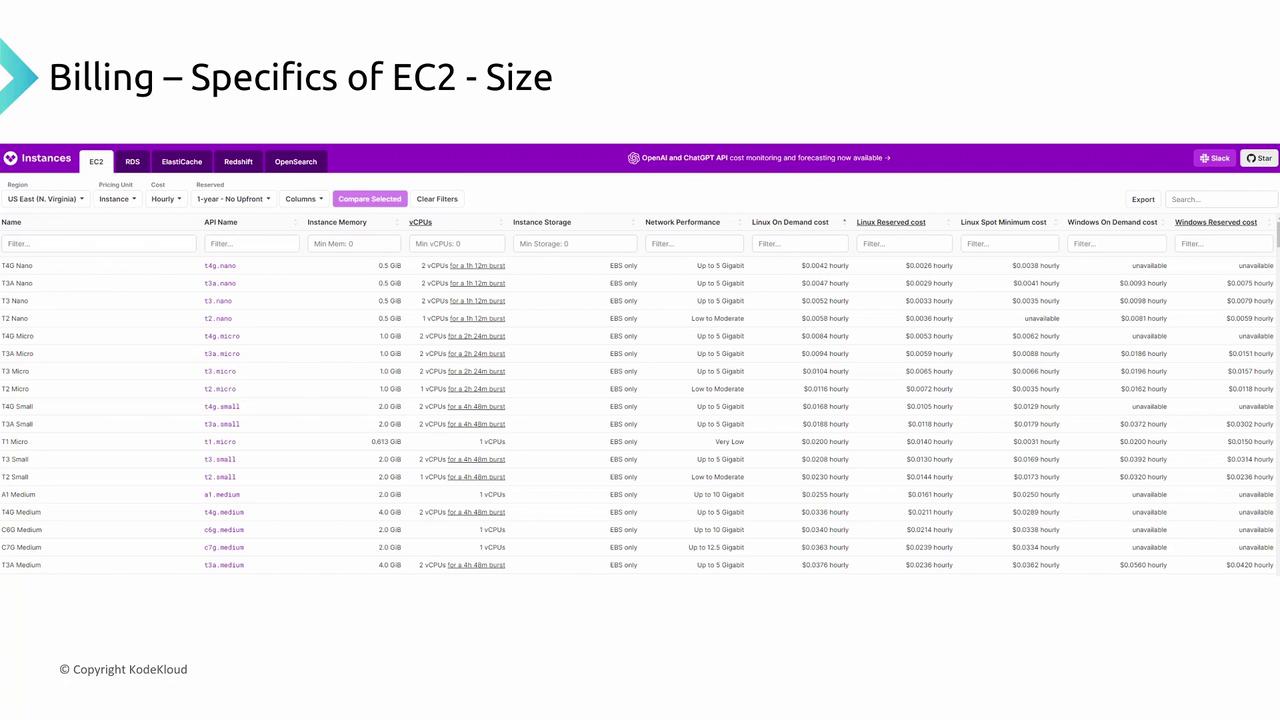
EC2 Billing Models
Understanding the different billing models is essential for cost optimization. Below is an overview of each model:
On-Demand
On-demand instances are billed for the duration they are active, typically by the second (with some billed per minute or hour). This model offers maximum flexibility without any long-term commitment.
Savings Plans
Savings Plans allow you to commit a specific amount (e.g., $10,000) in exchange for a discount that effectively provides more usage value (for example, $12,000 worth of usage). These plans are available for one-year or three-year terms.
Note
If you do not utilize the entire committed amount during the term, the unused portion expires.
Spot Instances
Spot Instances let you bid on spare capacity and can offer discounts of up to 90% compared to on-demand pricing. However, these instances may be interrupted with a two-minute warning if Amazon needs capacity for on-demand customers. This model is best for workloads that are fault-tolerant and can handle interruptions.
Reservations
Reservations involve committing to a specific instance in a particular region (and operating system) for one or three years. This commitment generally results in considerable savings compared to on-demand pricing.
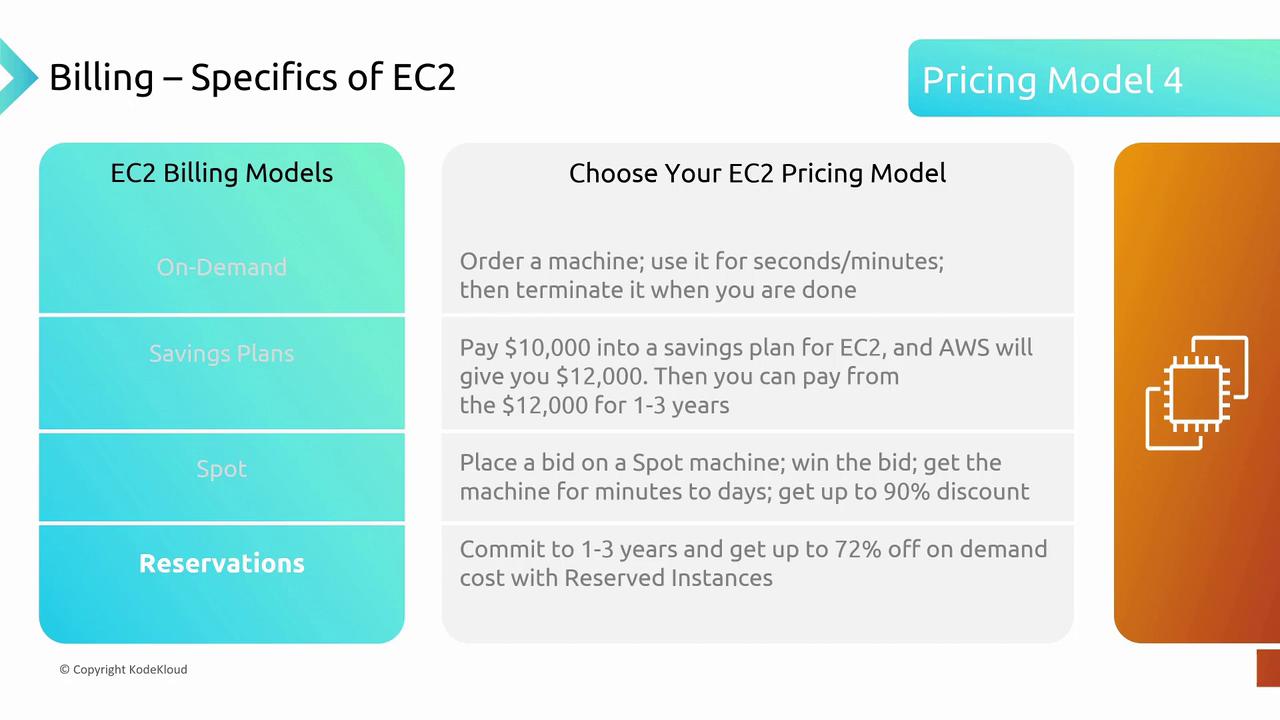
Dedicated Instances and Hosts
For customers with specific security or licensing requirements, dedicated instances and hosts provide exclusive use of physical hardware. While AWS’s shared tenancy is secure for most applications, dedicated models guarantee that no other customer’s instances will run on the same hardware. This premium option is typically the most expensive.
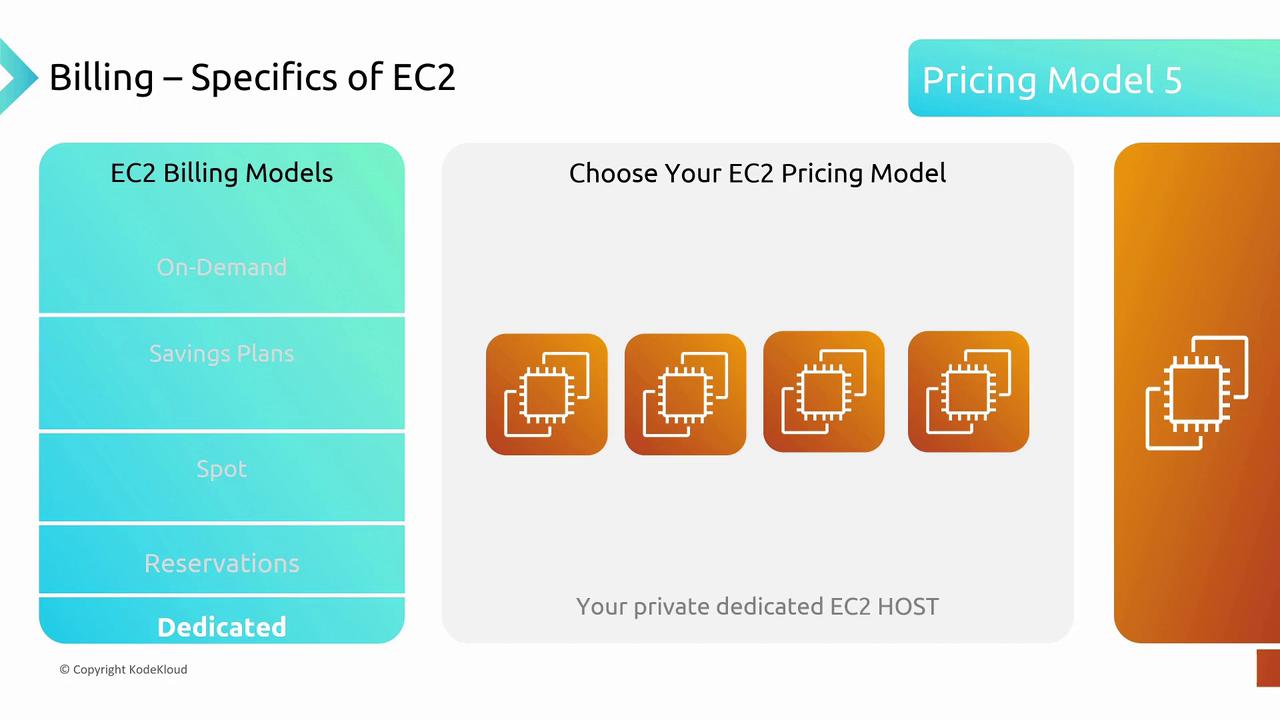
Billing Summary by Use Case
The three primary cost drivers for EC2 are compute (instance size), storage, and networking. Consider an R5.xlarge instance with the following specifications:
- 4 vCPUs
- 32 GB of RAM
- 50 GB of attached disk storage
- 1 TB of outbound data transfer
Using the on-demand model, each configuration has a defined hourly rate. Transitioning to a reservation model (with a one- or three-year commitment) might cut the costs nearly in half. Conversely, dedicated models may nearly double the compute cost relative to on-demand pricing.

For a larger instance, such as an R5.4xlarge, the dedicated model cost can be almost double compared to on-demand pricing.
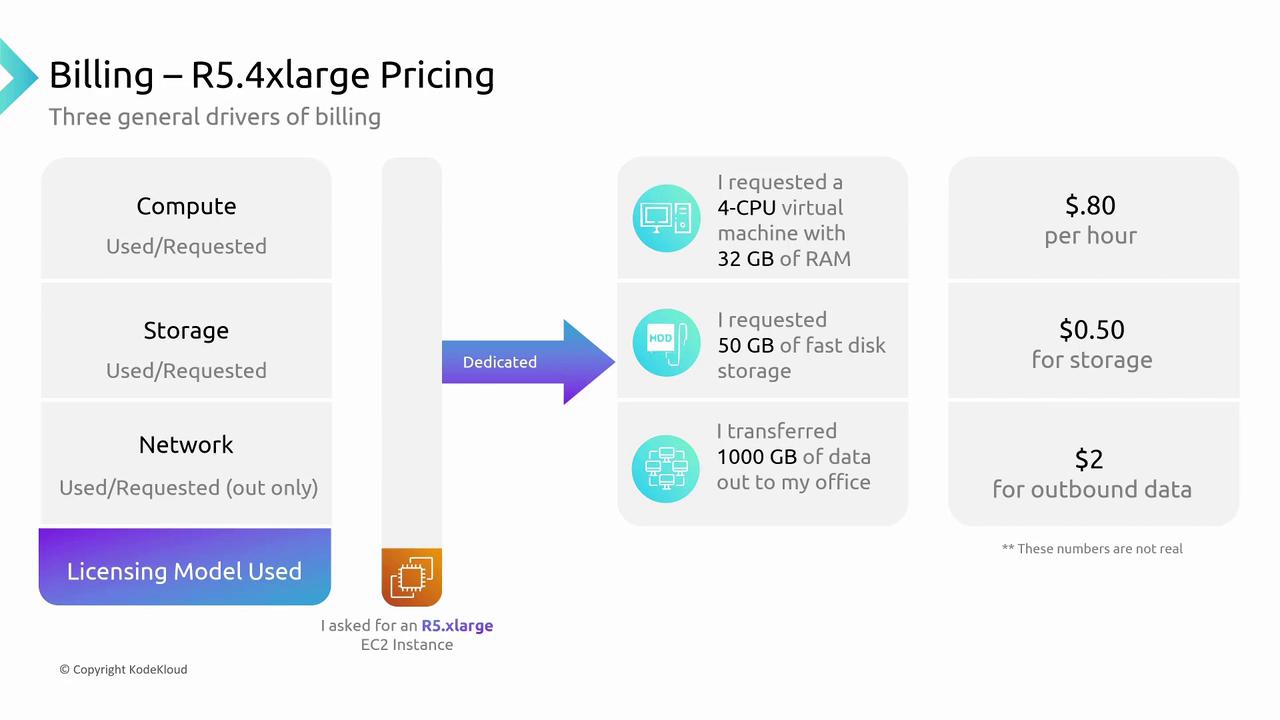
Additional Cost Considerations
Other factors that can increase your EC2 expenses include:
- Extra storage options
- Elastic IP addresses
- Load balancers
- Instance hibernation
Moreover, additional data transfers, especially outbound transfers to on-premises environments, will further impact billing.
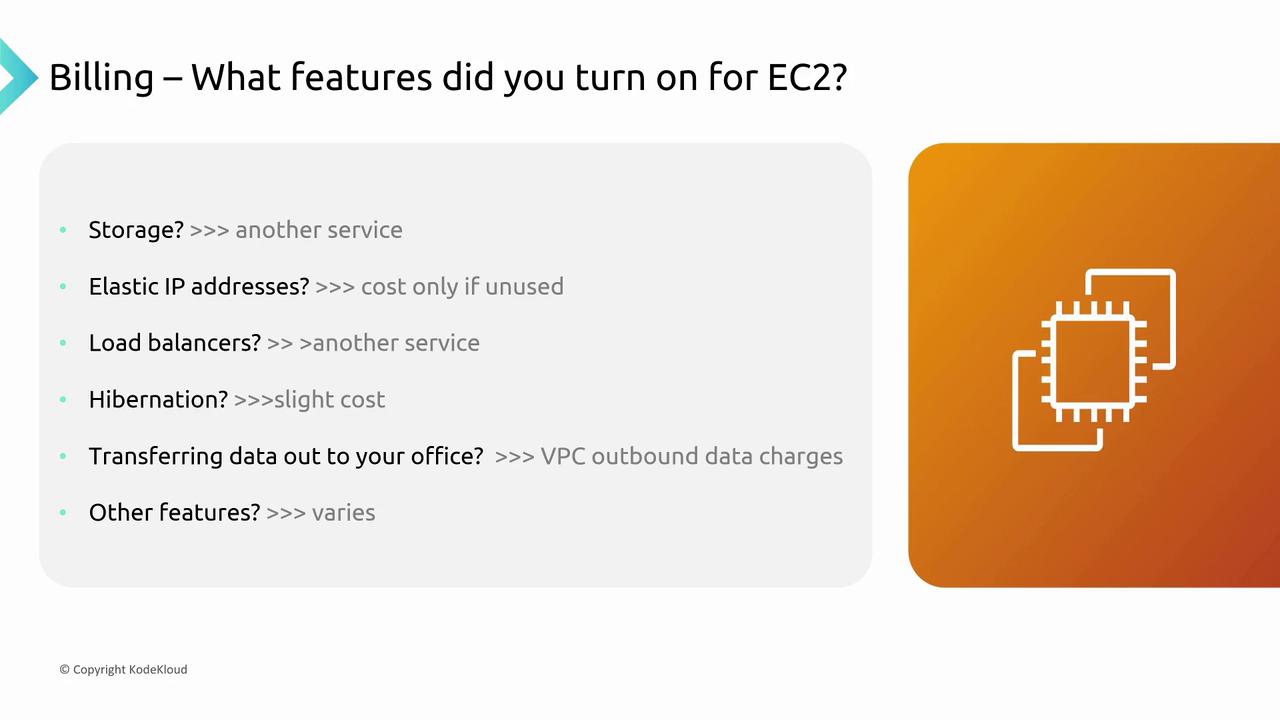
Warning
While these pricing details provide a comprehensive overview for AWS Cloud Practitioner candidates, deeper design and cost management strategies are crucial for those pursuing advanced certifications such as the AWS Solutions Architect Associate.
Final Summary of EC2 Billing
- EC2 costs are primarily incurred when instances are running, with storage fees applicable even when instances are stopped.
- Billing is based on three main resources: compute, storage, and networking.
- The main pricing models available are on-demand, Savings Plans, Spot Instances, Reservations, and Dedicated options.
- On-demand and dedicated models tend to be more expensive, while Reservations and Savings Plans offer significant long-term discounts.
- Spot Instances are ideal for workloads that can tolerate interruptions.
- Remember, the instance size (i.e., compute and memory) is the most significant pricing factor, and additional services can further modify overall costs.
Thank you for following this detailed EC2 billing summary. This is Michael Forrester signing off—see you in the next article.
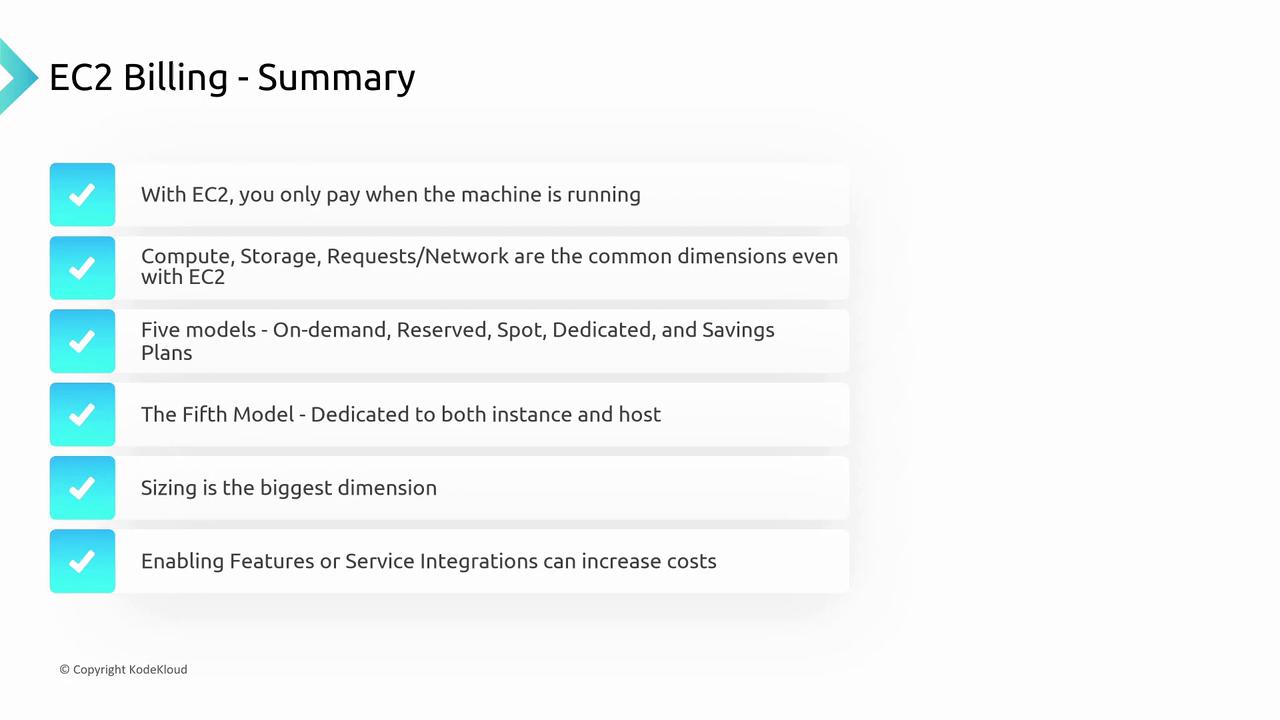
Watch Video
Watch video content